Nestled in central Greece and sitting atop 600 meter tall natural limestone pillars, you’ll find a wondrous place called Meteora. The name Meteoro, when roughly translated from Greek, means “midair” and has the aura of a fairy tale mixed with a side of fantasy novel. On the right day, surrounded by clouds that fill the valley below, Meteora seems to literally be suspended in the sky.
Although the site was featured in a 1981 James Bond movie (For Your Eyes Only) and is a UNESCO World Heritage site, Meteora remains a fantastic mystery to many around the world. Join us as we explore the majestic Greek region whose monasteries seem to float in the sky.
The History of Meteora
Meteora, a UNESCO World Heritage site, is known for its picturesque monasteries perched atop its vertical rock pillars. In the 9th century, hermit monks seeking solitude originally ascended these soaring cliffs. It is believed that they first climbed the cliffs with their bare hands, grabbing trees and rocks until they eventually carved out homes in the cliffside and nestled in small caves and crevices. They lived lives of seclusion and isolation, only occasionally exiting their caves to worship and pray.
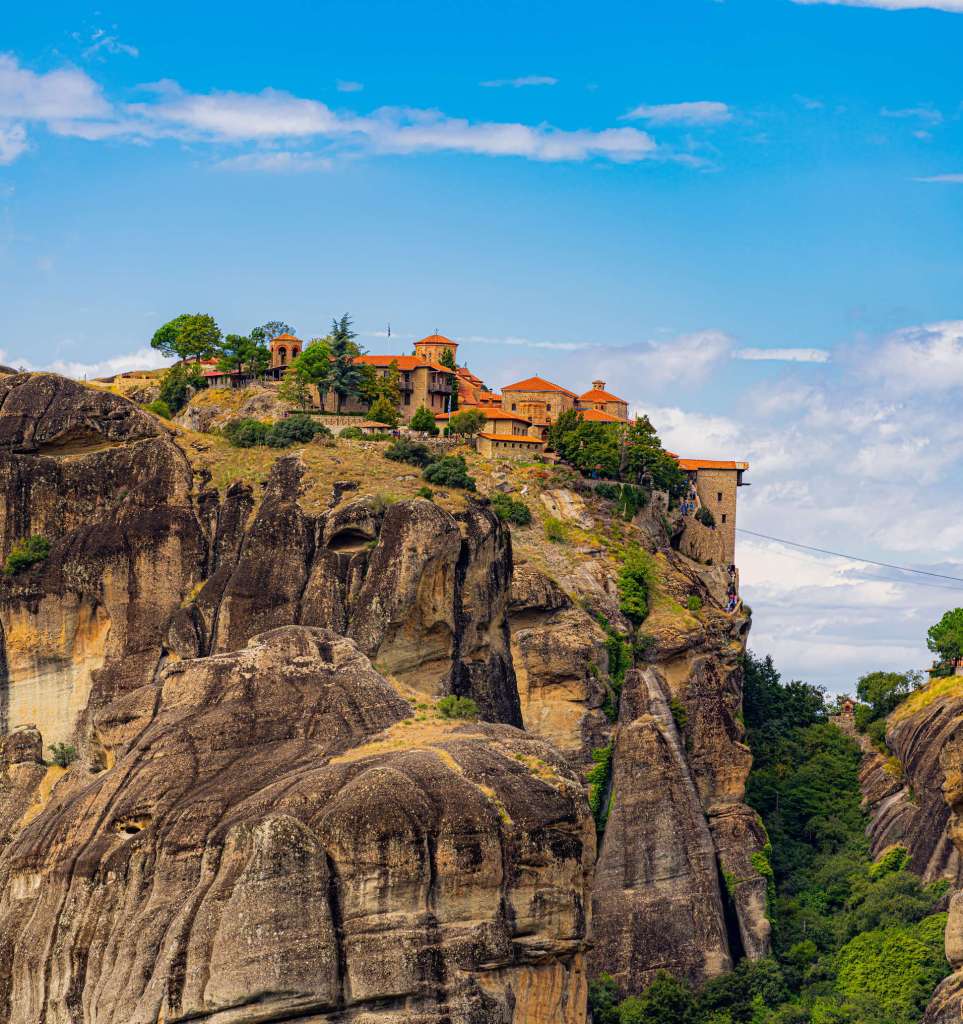
To appreciate how these remarkable monasteries were eventually built, a quick history lesson is in order. By the end of the 14th century, the Byzantine Empire’s 800-year reign was drawing to an end, with Turkish invaders increasingly besieging monastic communities in Greece. Hermit monks seeking safety from the then-ruling Ottoman Empire hid in plain sight and settled atop the impassable limestone cliffs of Meteora.
Construction of the Monasteries
Building monasteries in the middle of the sky is a herculean task and without access to present day technology like helicopters and airplanes, it is not known exactly how the ancient monks actually constructed the monasteries. It is believed that most of the monasteries were constructed over the course of 20 or more years, with each brick, mortar, and other materials being hauled atop the cliffs via nets, hooks, buckets, and ropes. More than 20 monasteries of various sizes were miraculously built by the monks on top of the cliffs, risking their lives in the process. While it is not known how many monks died during construction, it was surely a treacherous and deadly endeavor.
Despite the lack of steps and limited access to the outside world, the monastic communities of Meteora thrived.
Using scaffolds for climbing and getting supplies, 40 meter long extendable wooden ladders, and by using nets tied to a hook and hoisted up and down by a rope or retractable ladders, the monks would thrive in safety on the cliff tops.
Resurgence and Decline
Following a period of decline in the 15th century, the settlements of Meteora saw a brief resurgence in the 16th century when Meteora became a refuge center for Greeks fleeing the Ottoman Empire’s brutal dominion. Since it was one of only a few sites where Hellenic culture was preserved, it attracted not only the faithful but also poets, philosophers, and philosophical thinkers. Some argue that Hellenic traditions and culture would have completely vanished if it weren’t for the Meteora monasteries.
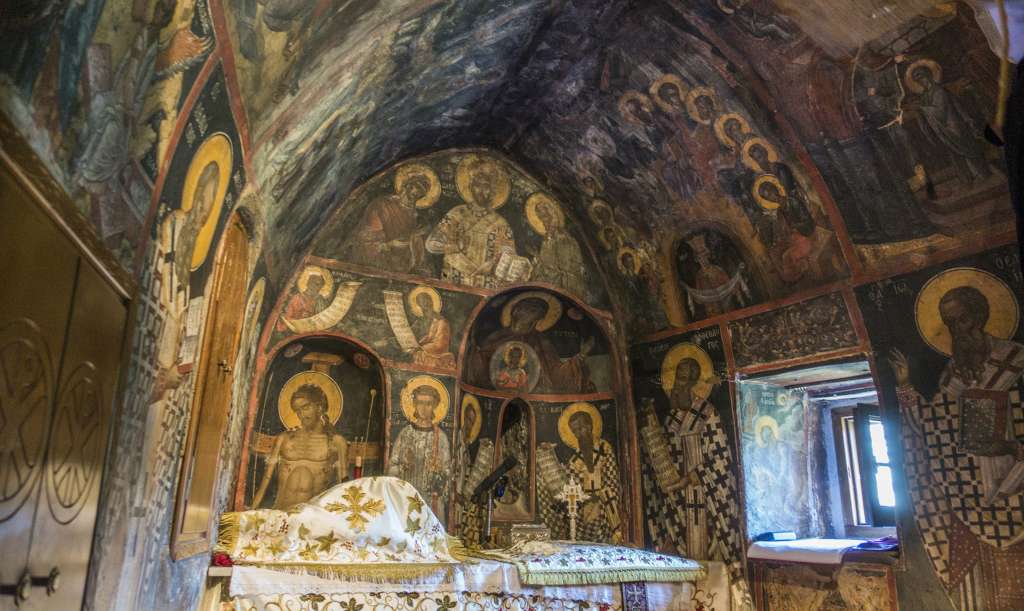
While the monasteries of Meteora were quite safe, they were not immune to attacks from invading thieves and conquerors. As a result, over the centuries, many of Meteora’s monasteries were either abandoned or destructed. During World War II, the site was severely destroyed and numerous artifacts were stolen.
Present-Day Monasteries
Although at least 30 monasteries were built over the course of history at Meteora, only six monasteries remain: the Great Meteoron (also known as All Saints), St. Nicholas Anapausas, Holy Trinity, St. Stephen, Rousanou, and Varlaam. While some of the monasteries still serve religious functions, most are only sparsely populated by monks and nuns.
The Holy Monastery of Great Meteoron, built by Saint Athanasios in the 14th century, is the highest, largest, and oldest of the six. The ancient bread oven and soup part can still be found in the smoke-filled kitchen, and former monastery monks are buried in the sacristy with their skulls and bones neatly piled on shelves.
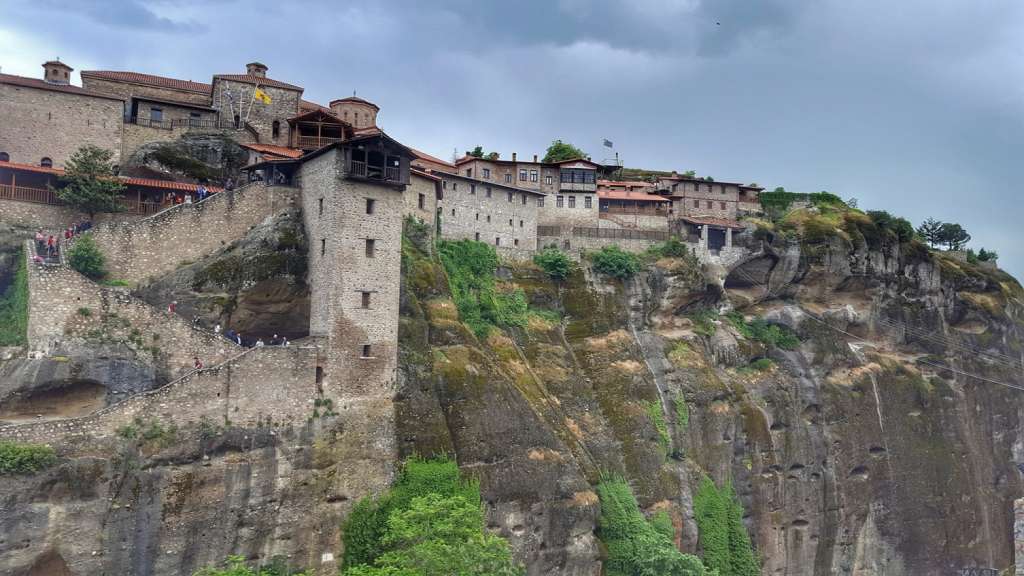
Holy Monastery of Varlaam is the second largest, and in the 16th century, two wealthy monks took over the site and it took more than 20 years to carry all of the building materials to the top. The original rope basket used to lift the supplies can still be seen.

Saint Nicholas of Anapafsas monastery has a single-naved church with a small dome decorated by the Cretan painter Theophanes the Monk in the 16th century. Monastery of the Holy Trinity is one of the least visited since it is the most difficult to reach, requiring a steep climb of 140 steps.
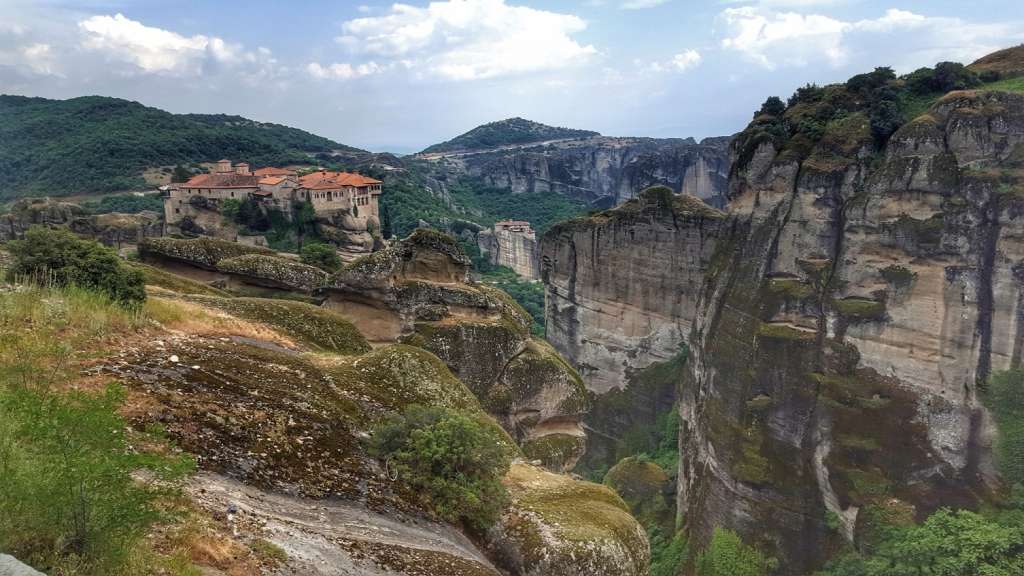
The last of the monasteries, the Holy Monastery of St. Stephen, which dates back to the 1400s, is now a convent with stunning views of the Pineios River and is the only monastery where visitors can visit without using stairs.
Accessing the Monasteries
Since the construction of paved roads through the Meteora area in the 1960s, it has been visited annually by thousands of tourists. The monasteries are easily accessible by bridges and stairs cut into the rocks. Before the 1920s, ascending the rock columns involved a perilous enterprise of climbing ladders or being hauled up by ropes and nets.
Conservation Efforts
Conservation efforts have been ongoing since 1972 to counter overall decay and the destruction incurred during World War II when the area was bombed by the German military. Ongoing threats to the structures include vibrations caused by low-flying aircraft and damage relating to the area’s frequent tremors and earthquakes.
Visiting Meteora
With an entrance fee of 3 € per person per monastery, a visit to Meteora is both inexpensive and potentially life-changing. Although the climb up to most of these monasteries is strenuous, but when you get up there you’ll say it was worth it. The view from the top is breathtaking, and you will feel like you are on top of the world, surrounded by nature and a serene atmosphere. Visitors can explore the monasteries and learn about the rich history and cultural significance of the site. They can also admire the stunning Byzantine art and artifacts that are housed in each monastery.
Meteora, Greece is a must-visit for those interested in history, religion, and architecture. The six remaining monasteries offer a unique glimpse into the lives of the early monks who lived on the cliffs and a chance to witness the beauty of the region from an unparalleled perspective. Whether you are a history buff, a religious pilgrim, or simply someone who wants to escape the hustle and bustle of everyday life, Meteora has something for everyone. Don’t miss out on the opportunity to visit this incredible site and experience its beauty for yourself.

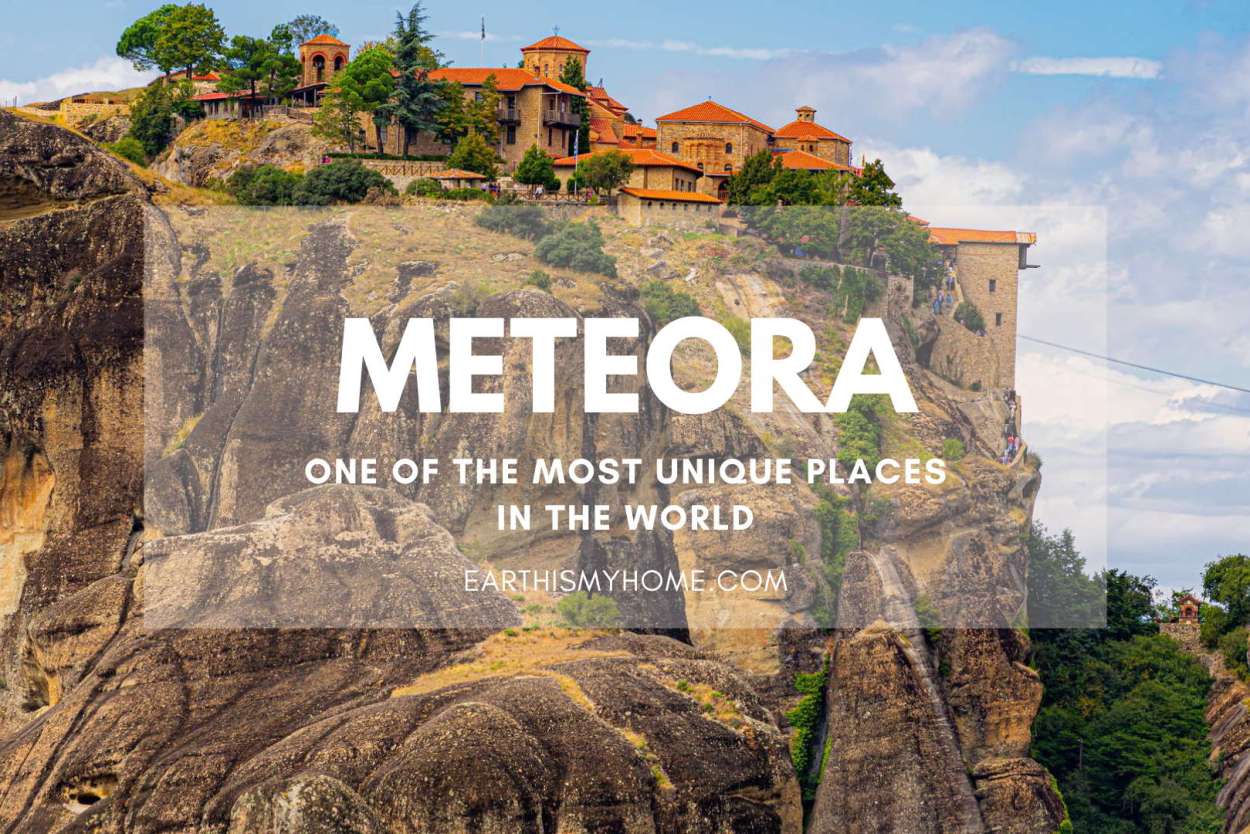
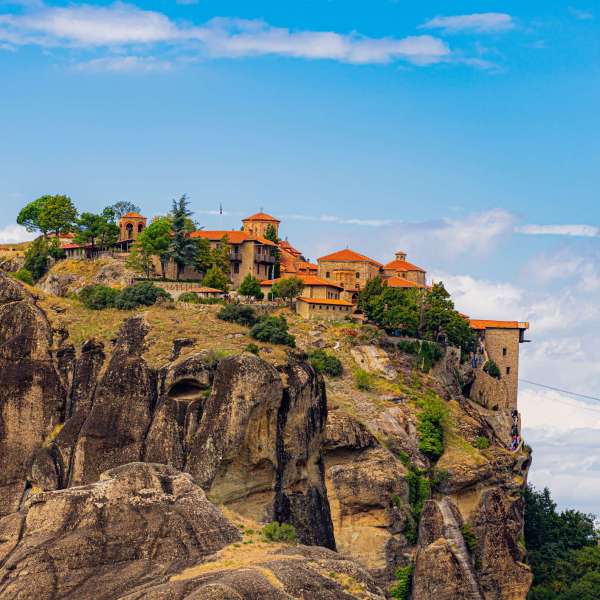
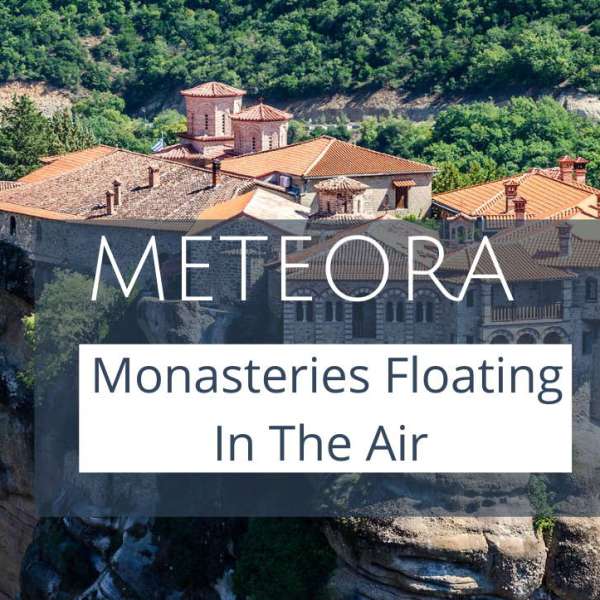

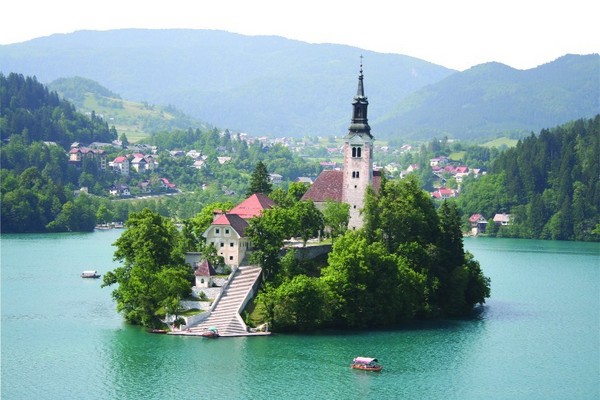
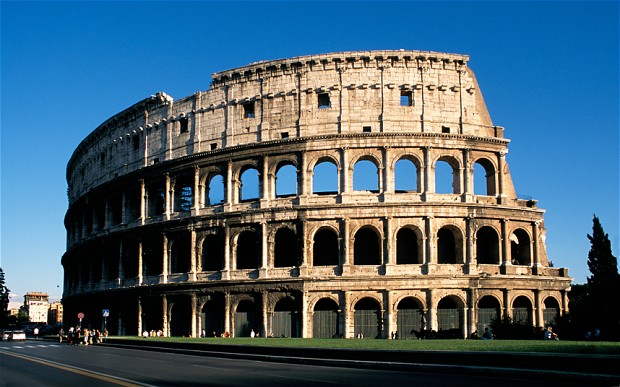
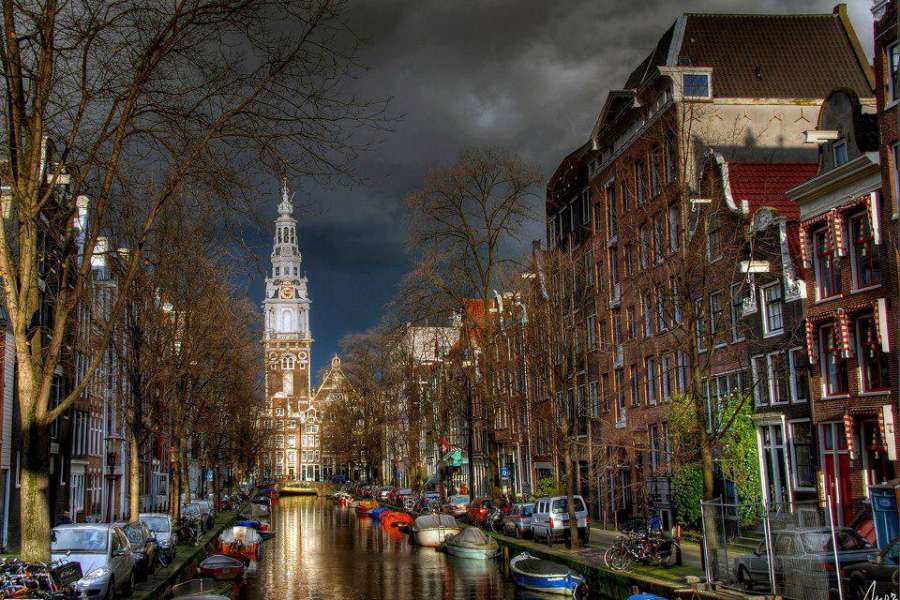


Leave a Comment